Pro Web - Unisys expertise in the Web Development, Design & Marketing. They have designed and developed more than 1000 websites & offer complete solutions for design and development. For more details visit: https://www.prowebtechnos.com/
Don't wanna be here? Send us removal request.
Photo

Amazing Mobile App Development Trends In 2021
This infographic is designed by Pro Web - Unisys. For more details, visit now: https://www.prowebtechnos.com/amazing-mobile-app-development-trends-in-2021/
0 notes
Photo
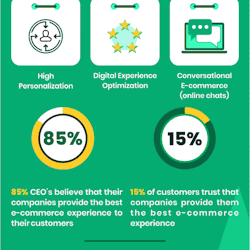
Top E-commerce Platforms In 2020 and Beyond!
This infographic is designed by Pro Web - Unisys. For more details, visit now: https://www.prowebtechnos.com/top-e-commerce-platforms-in-2020-and-beyond/
0 notes
Photo

Top E-commerce Graphic Design Trends To Follow In 2020
This infographic is designed by Pro Web - Unisys. For more details,
visit now: https://www.prowebtechnos.com/top-e-commerce-graphic-design-trends-to-follow-in-2020/
0 notes
Photo
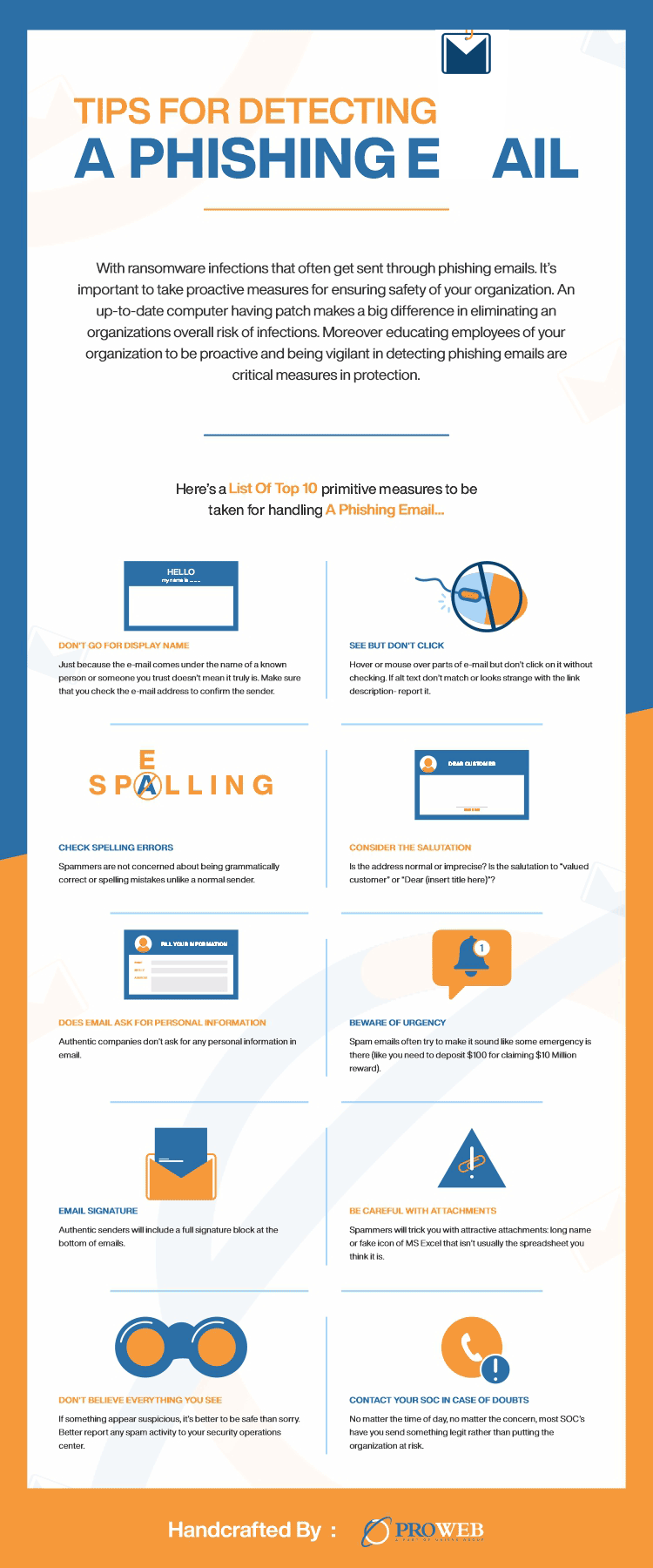
Tips For Detecting A Phishing Email
This infographic is designed by Pro Web - Unisys. For more details, visit now: https://www.prowebtechnos.com/tips-for-detecting-a-phishing-email/
0 notes
Photo

UAE Consumer Spending – Statistics & Trends
This infographic is designed by Pro Web - Unisys. For more details, visit now: https://www.prowebtechnos.com/uae-consumer-spending-statistics-trends/
0 notes
Photo
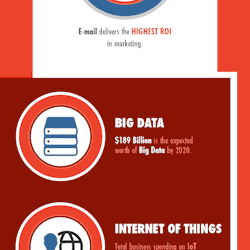
Digital Marketing Trends To Watch
This infographic is designed by Pro Web - Unisys. For more details, visit now: https://www.prowebtechnos.com/digital-marketing-trends-to-watch/
0 notes
Photo

Middle East Expats – Trends and Statistics
This infographic is designed by Pro Web - Unisys. For more details, visit now: https://www.prowebtechnos.com/middle-east-expats-trends-and-statistics/
0 notes
Photo

The Rise Of E-commerce In UAE
This infographic is designed by Pro Web - Unisys. For more details, visit now: https://www.prowebtechnos.com/the-rise-of-e-commerce-in-uae/
0 notes
Text
What’s The Difference Between Link Building & Outreach and How They Work Together?
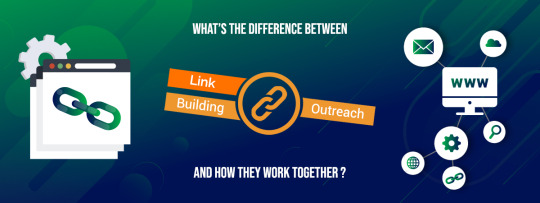
Every business owner desire to get their website founded by a huge number of audiences. Not only they want to attract more traffic, rank the highest for selected keywords and build solid credibility within their respective industries.
The process of link building and outreach can help businesses to accomplish this. Since both the processes require patience and consume time, one might face many setbacks while accomplishing the procedure. Also both these processes are continuous affairs and they will take quite some time before your business starts seeing the results of your efforts.
Interesting to know that link building and outreach have come to a point where they only prove to be fruitful when backed by resourceful content. Businesses cannot just promote themselves anymore. The rise of internet has forced companies to change the orientation towards value creation, thanks to Google. Now good intentions matter more than ever. The digital world is more into exchanging useful perspectives and new ideas.
In this post, we will discuss the basic concepts of link building and outreach along with their necessity for businesses online success, and how these two would combine together for best results.
· Link Building
The digital world is just like real world, where people gets judged on the basis of company they sustain. Websites looking to rank higher in SERP’s (indeed, requires to be found first), must do a few things right:
High-quality and up-to-date content is necessary.
No sign of any technical error should be present.
Eliminate any possibility of bad links.
Always link to authoritative sources.
Must be linked to by credible sources.
Here good link building service can help you out. It’s all about getting third-party web pages to link towards your website for ranking boosts. More is number of relevant links, higher your website would rank in Google. But, it was not always this simpler as businesses and SEO agencies have been used spam links to conquer Google’s search algorithm and rise up the ranks. Previously using web directories and get links was most done. Buying backlinks, or creating excessively promotional and weak content for getting posted on third-party sites after stuffing it with selected keywords to get more backlinks.
However these kind of practices have been dropped by Google, and also provoked it for creating algorithms to rank good websites. Today it’s not about adding more number of links, but having relevant and high-quality backlinks matter more, than the number itself.
For example, getting a mention in and a link from Search Engine Journal is of much greater importance with Google rather than a link from any new blog having not heard by anyone. The overall domain authority of websites matters. In easier words, links from good sources = vote of confidence. This also is the primitive reason why SEOs are more focused on obtaining quality links.
The Benefits of Link Building and How it’s Helpful for SEO
The process of link building is one of the most important aspect of SEO, since it brings more website traffic and improvises a webpage ranking, which is the ultimate goal of SEO. More number of external quality links are getting generated on your website (for your desired keywords), higher the chances of more people seeing and trusting your brand which holds paramount importance in online world. Whenever a trusted website links to a small business’s blog, it crafts into a vote of confidence for that business and its gets rewarded as rankings by Google.
Getting links from highly authoritative and ranked web portals is quite tough. Remember that old gimmicks don’t work now and everyone in the world of digital marketing have to gear up for our game. Black hat SEO techniques aren’t worth your time and can get you penalized. They are also completely out of trend The Internet is now moving towards trust-based transactions and relationships. Relevant and quality link building is now carried out in the following ways:
Relevant content creation
Guest posting
Email outreach
PR outreach
Influencer outreach
Social media outreach
· Outreach
Outreach is one of the process to carry out link-building. This can be done in several ways by any business: email outreach, social outreach, influencer outreach, and press outreach. Every process mentioned above includes reaching audiences to make them click on the website link(s), or involve a mention in content built by you on their websites to earn backlinks to your website.
Email/PR Outreach:
This process includes emailing to people and asking them to link back on your website. But you cannot send it to random people, since doing it by precision by finding relevant websites according to your link building purposes. Creating a personal email for the owners/webmasters is the most effective way to make a value offer. This again is a form of giving critical feedback to them for their website, or pointing out a few broken links. In return ask them to link back to your website.
Influencer Outreach:
The process includes contacting influential bloggers, websites and communities to offer writing for them in return for something – a link back to your website and/or a link to your social profile. However this methodology have changed in past few years. In starting times, getting a blogger to agree on your pitched idea and wait for your content to get published with your preferred links and keywords was only concern. Bloggers feel skeptical of such unsolicited emails as guest-blogging has been absurdly used by a number of businesses having sole aim to earn backlinks only.
Bloggers are enthusiastic about their expertise areas. There isn’t much consideration or regard for knowledge enhancement in the past by followers of the blogs. This made them feel used, since most still accept guest posts, but on their own terms. Google also made this approach unviable through constant updates on its search algorithm. When digital marketers put excessive keywords into text for linking back to their websites, it signals malpractice and dishonesty to Google for penalizing fraudulent websites.
Today focus is on creating a quality content, instead of flagrantly promotional content, and build relationships. Digital marketing is about sharing ideas and getting benefitted benefit from each other’s expertise and presence. Guest blogging for link building includes making a value proposition and earning a chance to write for them.
The focus is focused more on quality that bloggers constantly insist while not allowing businesses to link back to their websites from within the content published on their websites rather than allowing links in author bios. Bloggers also share guest posts on social media as well.
Social Media Outreach:
It involves examining and developing relationships via social media for getting your content popular and maximize its impact. Social media is one of the best way to engage current customers and start getting conversations through potential ones. Just need to follow people, like their tweets, promote content on relevant pages, message followers for checking website, connect on LinkedIn, participate in discussions – in short, get your voice heard.
Benefits of Outreach and How It Helps SEO
The outreach process helps in 2 ways. Since Google ranking is decided on the basis of number and quality of generated links, generating links from high PA/DA websites is obvious method for generating “link juice.” The prominent challenge is that new businesses who wanted to get established in their niche got heard only by a few people. Those creating quality content on regular basis and getting it promoted on social media regularly would require big names for interlinking to get a huge volume of traffic and improve their search rankings. Those reaching to expert and relevant websites, can definitely gain immensely from their credibility.
Guest posting on established or a popular website would give you right exposure for the created content to a whole new (and highly relevant) audience. This has capability to drive greater traffic and increasing your social media following, both of which are beneficial from an SEO point of view.
Conclusion
We hope that difference between link building and outreach is clear now. For ample benefits, build an approach aiming on quality content creation and supports both. Radically, focus on quality and removing short-cuts to get higher ranking on Google makes it difficult for new businesses to climb up the ladder. But, it also creates a striking opportunity for startups to solidify their presence on the basis of the content quality. This makes you go ahead of the competitors. Creating quality content (and distribution via outreach) is best method for link building, however emphasis should more be on quality content creation that’s more focused on audience.
Blog Source URL: https://www.prowebtechnos.com/whats-the-difference-between-link-building-outreach-and-how-they-work-together/
0 notes
Text
End Of Magento 1 – Everything You Must Know About Magento 2

The announcement of Magento ending the support for Magento Commerce 1 and Magento Open Source 1 in June 2020 came like a shocker for e-commerce web development industry. The e-commerce platform provider has repeatedly reminding users to upgrade their existing online store before the end of this month. The latest version of Magento 2, is faster, better, and more secure. Those using Magento 2 development services, might have been asked for upgrading the version by their vendors. Here’s a list of precise reasons why you should go for this new version:
Why Magento 2 Is Better?
Unlike Magento 1 which makes your e-commerce store vulnerable to security threats, Magento 2 offers higher functionality, speed, and robust security. This e-commerce platform is capable of providing a better online shopping experience with features like stronger data protection and much more.
What are the improvements offered by Magento 2?
Magento 2 has been equipped with several new features and striking functionality improvements. Straight from enhanced user experience to robust data security, Magento 2 offers everything. Some majestic features of Magento 2 include:
· Product catalog management
· Integrated payment processing (checkout)
· Frictionless order and shipping management
· Improved B2B functionality
· Mobile-fist UI/UX design
· Enhanced in-built marketing and SEO tools
· Dedicated account manager and premium tech support
· International shipping capabilities
· Multiple currency support
Key Announcements About Magento 2
There are several key points highlighted about Magento 2 during the announcement. Here’s a list of some notable ones.
·Quality Enhancement
There would be no availability of quality improvements for Magento Open Source edition after ending of Magento 1. This clearly means that businesses will require hiring dedicated Magento developers for improving their store quality.
·Third-party extensions
Availability of 3rd party extensions is helpful to create visual catchy and immersive experience on Magento stores. But Magento has already announced “no support” to any third-party extensions and updates on certain versions will only cover the core platform. Nevertheless, it’s highly recommended to choose a suitable Magento extension development service for getting desired modifications.
·Support For Platform and Merchants
Magento also announced of no more further support for Magento developers or merchants after Magento 1 ends in June ‘20. This means that store owners would need Magento development community or experts in Magento 2 development for any kind of technical support. However this could hugely impact the management and maintainance of e-commerce websites.
Conclusion
Magento gained immense popularity due to its remarkable characteristics like unbeatable performance, flexibility, and capability of handling vast and diverse product ranges. Magento 2 contains all these and much more. The upgrade to Magento 2 will require major redevelopment in crucial parts of the current website. Those having their store customized by an e-commerce web development company, would never find these changes difficult for them.
Pro Web is a Magento development company, offering industry-best e-commerce solutions. We are having a track record of delivering solutions within pre-decided time intervals! Throughout the lockdown, we helped several businesses to resume operations by developing robust e-commerce mobile apps and websites in short span of time. Since global online markets are getting shifted promptly, we are committed for delivering the most advanced solutions to clients worldwide.
Blog Source URL: https://www.prowebtechnos.com/end-of-magento-1-everything-you-must-know-about-magento-2/
#Ecommerce development#ecommerce solutions#ecommerce website solutions#ecommerce development company in dubai#ecommerce website dubai#ecommerce website in uae
0 notes
Photo

Amazing Ways To Improve Your Website Usability
This infographic is designed by Pro Web - Unisys. For more details, visit now: https://www.prowebtechnos.com/amazing-ways-to-improve-your-website-usability/
0 notes
Text
How To Make An Online Store On Shopify Plus?

Shopify is a leading e-commerce web development platform based on a subscription to a software service model, helping business owners to create highly functional e-commerce stores and utilize their shopping cart solutions for selling, shipment, and managing their products.
Shopify Plus offers a wide range of services for store owners as well as end-users by providing an access of easy to use admin panel where you multiple tasks like product addition, order processing, store data entry can be done in a hassle-free manner. You can build a fully functional online store to sell digital or physical goods, just for a monthly subscription of $29/month with a 14 days free trial.
If you are looking to build an online store using Shopify Plus, you’ve come to the right place. In this post, we’ll show you how to use Shopify so you can launch your online store as soon as possible.
Ready? Let’s get started…
1 Sign-up
Visit Shopify.com and click on “signup” form to create an account. Just enter the required details and click the ‘Start free trial’ button. Always remember that your online store name should always be unique otherwise you’ll be asked to choose something else. Few more details like including your name, address, country, and contact number would be asked later on. Now you will be asked whether you have products available and what do you aim to sell. Select the appropriate option and once complete, click ‘I’m done’.
2.Setting Online Store:
After the signed up process gets finished, one will gets redirected to your store admin screen. Now you are ready to start customizing the store as per requirement, upload products and setting up payments and shipping.
3.Select a theme
Shopify have a team of globally recognized designers on their theme designing board including Clearleft, Pixel Union and Happy Cog, creating over 100 themes for developers to choose from. With 8 free & 68 premium e-commerce templates available, one will not be having any trouble finding the perfect corporate image for your business.
· Check the Functionality and Reviews
After find a suitable theme, click on the theme’s sample image to get some more information like responsiveness along with other features. Have a look at some reviews by scrolling down
· Preview the Theme
You can click on View Demo option to see the theme in action. This option can be easily found below the green ‘Preview Theme in your Store’ button.
· Get the Theme
After selecting the suitable theme option, click the green button. Shopify will ask for conformation about theme installation, then click Publish as my Shop’s Theme. After the theme has installed, Shopify will let you know and will give you the option to Go to your Theme Manager.
4. Edit Shopify Settings
All Shopify themes offers the flexibility of making simple changes that can massively change the appearance of your store, so you can rest assured knowing you won’t end up with a website that looks like a clone of thousands of other stores. On your admin screen, select ‘Themes’ option in the left navigation menu which gives you some basic settings changes. This allows you to make a duplicate of the theme. The second option is ‘Customize Theme’ where you can test the controls all the basic functionality of your store to find out what your site is capable of.
The most common features will include:
uploading logos
Color schemes
Font choices
Uploading slides to a homepage carousel
Adding related item functionality to product pages
Choosing how many items appear on each line of the collection pages
Many themes also offers repositioning elements on pages such as showing product images on the left, right or center of the page.
5. Adding Products
In navigation bar at left select ‘Products’. You can see a blue ‘Add a product’ button in the middle of the page. You can utilize this to add as much detail as needed about your products. Especially look at those that will help with SEO such as name, description, and URL. Include as many details as possible to help inform the customers about your items. Same screen will also help you upload product pictures and getting them rearranged without any worry about any particular order. Once everything is filled out, always remember to click the ‘Save product’ button in the top and bottom right corners.
Payment Gateways
A payment gateway gives you the facility of receiving payments from your customers via your website. Since every payment gateways is created different from other, you need to look at the following essential points while choosing the right payment gateway.
Transaction Fees
Card Types
Offsite Checkout
Remember that payment gateway transaction fees are additional on Shopify’s own transaction fees. Depending upon your Shopify plan, you can save on these extra costs. Depending on your plan, you will receive these highly appealing rates.
Basic 2.4% + 20p
Professional 2.1% + 20p
Unlimited 1.8% + 20p
Depending on how many transactions you make every month, it could be worth upgrading to take advantage of these savings.
6. Get Your Online Shop “LIVE”
Before your site can go live, it’s required to add a few more details about your company and how you plan to make deliveries and pay tax.
Taxes
Go to the Products page of your admin panel.
Click on the name of a given product.
Scroll down to the section called “Variants”.
Make sure the checkboxes next to Charge taxes and Requires shipping are checked if you need to include these with your products.
Some stores won’t need to charge taxes or shipping on products like digital goods. On the other hand, a T-shirt store will likely need to charge both.
If you are planning to ship your product to customers, make sure to enter the product’s weight in the appropriate field.
Shipping
From your store admin, go to the Settings > Shipping page.
In the “Shipping rates” section, see if you have set a weight-based shipping rate and adjust it according to your product’s specifications.
7. Add a Domain Name
To get your site live you’ll need a domain name. Either you can purchase a domain from Shopify or it will be added to your store automatically. These will cost $9-$14 USD per year. Or you can purchase a domain from a third party such as GoDaddy. These domains start from $10.00 USD a year. Now you need to follow the procedure for making new Shopify store live on a third party domain name.
Add the new domain in Shopify
Update DNS records
Remove any storefront passwords
Set as primary if relevant
Congratulations, Your New Shopify Store is Ready!
If you have managed that way – congratulations. You should now have a fully working online store. If you want to explore alternatives, see below:
Alternatives for Shopify?
You can also use WooCommerce for developing an online store. It’s cheaper but requires a knowledge. Either way, it can be a great alternative. For more detailed review you can read this – Shopify vs. WordPress (WooCommerce).
Blog Source URL: https://www.prowebtechnos.com/how-to-make-an-online-store-on-shopify-plus/
#shopify development#Shopify designers#shopify uae#shopify development company#shopify payment gateway uae#shopify dubai#shopify uae license#shopify email marketing#shopify experts#shopify enterprise#shopify plus#shopify partners
0 notes
Photo

The Essence Of Remarketing In 2020
This infographic is designed by Pro Web - Unisys. For more details, visit now: https://www.prowebtechnos.com/the-essence-of-remarketing-in-2020/
0 notes
Text
SEO Trends 2020 - How To Find The Best SEO Company In Dubai?

A latest report have clearly indicated that total spend for advertising in the Middle East region is stranded around $3 billion and expected to go down in 2020. This data showcase the tough situation for all the digital agencies in a fierce battle for customers with several competitors around. Top 10 SEO agencies in UAE grossed more than $28 million USD in 2019. But this is hard earned money, as clients nowadays are selecting the service providers on a tight budget.
Keep up with on-going marketing trends
Despite investments going down in gulf region, requirement for business digitalization is not going anywhere. It’s interesting to know that 38% of businesses have a good digital strategy and only 3% achieved advance state of their digital transformation. For creating an effective digital marketing strategy, staying focused on the latest and most effective trends is mandatory. The $15 billion cap global marketing industry spends more than 70% percent of their budgets on social media influencers. About 99.06% of the population in UAE is active on social media and it plays a great role in influencer marketing leads to a new name, s-commerce (social commerce).
Highest Awareness Levels
When compared to major cities in the Middle East region, businesses in Dubai value SEO (Search Engine Optimization) the most. Just like other technical hubs, Dubai also have entire Quarters focused across internet business. Especially the presence of tech giants from other parts of the world companies has fostered the requirement of SEO methods as crucial marketing instrument.
Online Shopping Through Smartphone
The trend of using smartphones as primary tool for shopping products like electronics, clothing, and footwear is growing like anything. A recent study showcase that 50% of under 25 years prefer shopping through smartphones.
Youtube Advertising Outreaches
A total of 7.88 million UAE citizens which is equivalent to 82% of total population is using YouTube and this makes it a preferred choice for advertisement. Features like TrueView In-stream, TrueView Discovery, Bumper Ads, and TrueView for Shopping are offered by YouTube for advertisement campaigns complementing influencer marketing strategies.
Snapchat Remains In Trend
Snapchat continues to have a huge user base in UAE and running ad campaigns on this platform is important in 2020. So, your social media marketing efforts include this running ad campaigns on Snapchat is staying an important part of social media marketing. The most popular Business uses of snapchat are flash sales, scavenger hunt, and secret menu Item.
Data-Driven Marketing
Customer’s attention in the digital realm is crucial. Since there are lots of offers available within few clicks, personally engaging and relevant content is an aid for keeping the customers loyal. Using data collections GDPR-compliant and data protecting by yourself rather than using Google or Facebook is a must in 2020. Moreover the customer data enables marketer to create a seamless multichannel experience. This way contains a unified brand experience with channels like website, webchat, email, paid advertisement, and SEO.
Artificial Intelligence
Integration of Artificial Intelligence in chatbots and other conversational interfaces are useful helpful for reducing customer response time along with making it faster and smarter than traditional methods. Also this helps in smarter personalization and creation of better content strategies, stronger analytics and reporting systems.
Blog Source URL: https://www.prowebtechnos.com/seo-trends-2020-how-to-find-the-best-seo-company-in-dubai/
0 notes
Photo

Explanation of Git and Github Workflow & Some Basic Commands
This infographic is designed by Pro Web - Unisys. For more details, visit now: https://www.prowebtechnos.com/explanation-of-git-and-github-workflow-some-basic-commands/
0 notes
Text
Shopify Plus: 7 Limitations You Must Know Before Choosing The E-Commerce Platform
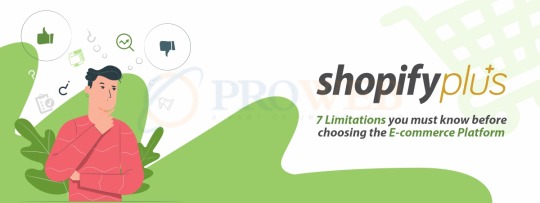
Shopify has successfully paved a reputation of being one of the best e-commerce platforms available. Just like other e-commerce development frameworks available today, Shopify also has got some lacking points and having complete knowledge about these limitations is important to match your expectations from an e-commerce store. There are ample advantages of Shopify which makes it a preferred e-commerce platform. However this doesn’t mean that you forget about the disadvantages altogether. In this post, we point out the non-available features of Shopify Plus e-commerce online store. Keep on reading to know more about them.
Functionalities Not Available With Shopify Plus
Starting from design customization, store management to payment processing, Shopify Plus has some features not available which might affect your online business. So let’s have a look at these drawbacks.
1. Easy Customizable Backend
Shopify Plus offers the facility of easy customization for the storefront. However there’s no scope to personalize the back end. Also the process of making any modifications on the back end is tedious. You would require to perform any kind of modifications and additions through front end only. Again, you also require customizing the store’s API, which itself is quite complex. To add more, Shopify Plus is dependent on third-party apps for enabling modification and feature additions. This not only adds up complexity but also additional expenses for the store owner.
2. Transaction Commissions
Shopify deducts a small percent from every sales you make. This might appear both disappointing and ridiculous to several store owners. Worse part is that e-commerce platform owners cannot see this in Shopify pricing plans. The e-commerce development platform charges this commission without any marketing or performing any necessary activities for increasing sales of your stores. Many Shopify store didn’t notice that they would be eventually charged a sales commission.
3. Payment Gateway
Shopify provides the permission for customizing the look of an online store front end checkout. But it does not allows addition fields or functionality modifications for payment gateway. This has been the frustrating part for many store owners as it significantly affect international sales. Having a seamless checkout process is crucial for any successful e-commerce business and with this kind of lock-in, it’s difficult to ensure a smooth shopping experience for every shopper.
4. Multi-storefront Management
Shopify Plus doesn’t offers the facility to link multiple e-commerce domains to a single online store. Even you can’t manage several storefronts through different warehouses as it’s a challenging task to manage multiple brands for one store. Also the management of catalogs, B2B services and inventory management is tedious too. Those running a medium to large e-commerce store with diverse brands might find it a significant issue. Efficiently management of numerous brands and inventory with full control over multi-store management is important.
5. E-commerce Analytics
Another lacking feature here is in-depth analytics functionality. The absence of a full-blown in-built analytics dashboard makes it difficult to get useful insights, especially for large retailers. The analytics features have been specifically designed for small and medium businesses. So, fetching of sales data is a huge challenge for big businesses. For instance, an online retailer offering diverse products might face difficulty in getting customized reports from specific category.
6. Search and Filter
This functionality on Shopify stores might leave customers unsatisfied. It’s important to note that Shopify only offers basic product search features as of now. Say, if any shopper fails in typing correct product name, then nothing will get displayed in results. There is nothing like auto-correct in product search results. Also Shopify stores don’t offer suggestions while a shopper starts typing a product name unlike other advanced eCommerce platforms do. Be it e-commerce website or Shopify app development, this missing point is similar everywhere.
7. No International Support
E-commerce businesses cannot afford to limit themselves in geographic boundaries. This also makes it important for e-commerce platforms to provide extensive support when it calls for performing business activities in global circuits. Compliance with international rules and guidelines is important for prolong running of e-commerce. Shopify Plus doesn’t provide any tool for helping international customers deal with regulations or taxation procedures. The absence of extensive multilingual support also makes it tougher for store owners to expand internally.
Conclusion
Whether it’s multi-store management or self-business expansion, Shopify misses some crucial functionalities. These disadvantages are primitive factors why several big online retailers prefer Prestashop or Magento over Shopify Plus. However, Shopify still holds a top position in being selected as preferred choice among small and medium businesses. Small businesses select Shopify Plus due to its capability of ready-to-launch online store.
At Pro Web, we offer complete e-commerce consulting to clients before they finalize a solution. Our e-commerce services are capable to serve diverse needs of businesses. Follow our blogs to stay updated about everything eCommerce.
Blog Source URL: https://www.prowebtechnos.com/shopify-plus-7-limitations-you-must-know-before-choosing-the-e-commerce-platform/
#shopify development#Shopify designers#shopify uae#shopify development company#shopify payment gateway uae#shopify dubai#shopify uae license#shopify email marketing#shopify experts#shopify plus#shopify partners
0 notes
Photo

Top 5 JavaScript Frame Works In 2020
This infographic is designed by Pro Web - Unisys. For more details, visit now: https://www.prowebtechnos.com/top-5-javascript-frame-works-in-2020/
0 notes